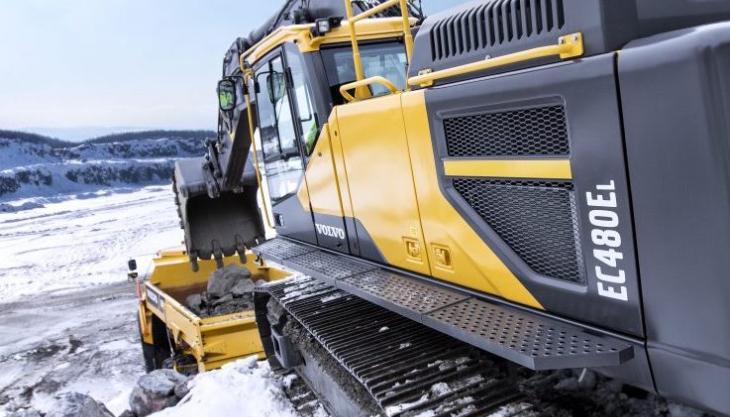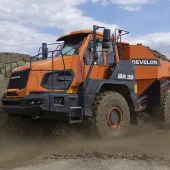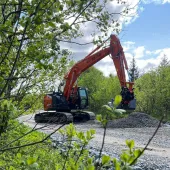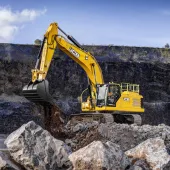Five tips for using an excavator in icy weather

Volvo CE offer some useful advice to maximize safety and uptime during the winter months
WHEN snow falls and ice covers the ground, it is vital that excavator operators take extra-special care of themselves and their machine. Here, Volvo Construction Equipment offer five tips to ensure maximum safety and uptime during the winter months.
1. Always clear snow and ice from the machine
Before beginning a work shift, operators should clear any snow or ice that may have settled on their excavator overnight. Snow may look soft and fluffy but once it compacts it can interfere with the movement of the boom and arm. If it compacts around a hydraulic cylinder, for example, it could even cause the component to break. Operators should clear the steps to the cab to ensure safe entry and exit, as well as the around all the windows to make sure visibility is not obscured.
2. Complete daily visual inspections
Regular excavator maintenance inspections are always important but particularly in wintry conditions. Before stepping into the machine, operators should check the hydraulic hoses as freezing temperatures can degrade the composition of the rubber tubing. Once stressed by hot hydraulic oil, cracks may rupture spilling litres on to the ground in a matter of seconds. If a hazardous material spillage occurs, construction companies may face fines for environmental damage on top of costly clean-up and repairs.
3. Protect hydraulic cylinder rods from corrosion
Repeated exposure to snow, ice and salt can cause the chrome on the hydraulic cylinder rods to rust over time. Operators should fully retract the rods when possible to help decrease the potential risk of damage. Regular steam washes of the excavator exterior will also help remove any build-up of salt.
4. Give the excavator enough time to warm up and cool down
The basic steps of starting up and shutting down an excavator require special attention in extreme cold. Before any work can be done, the operator should give the engine and hydraulic systems time to warm up. Once the engine has stabilized, after about five minutes of idling, the operator should start moving the machine slowly to warm up the entire system. The operator can start working at full power as soon as the temperature indicators in the cab reach normal range. At the end of the work shift, the operator should also allow one-and-a-half to two minutes of idle time before shutting down power.
5. Pay careful attention to traction
While excavator tracks are designed to achieve as high traction as possible, there is still a risk of sliding in extremely icy conditions. Operators must remain vigilant at all times of their position and traction on the job site and exercise caution with their movements to avoid an accident. Owners of wheeled excavators may wish to switch to dedicated winter tyres to improve grip on frozen surfaces.







